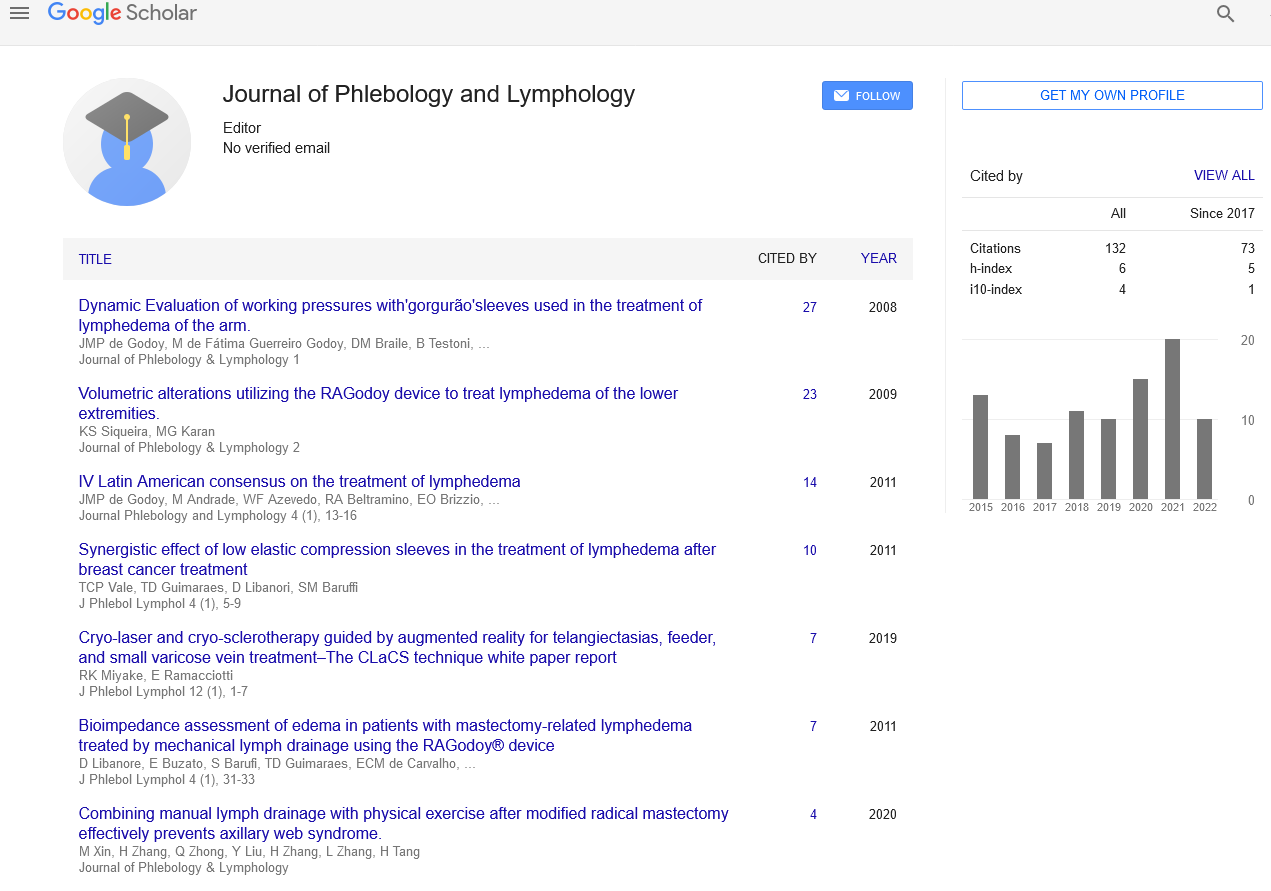Immune system of jawed vertebrates
Received: 14-Jan-2022, Manuscript No. puljpl-22-3477; Editor assigned: 16-Jan-2022, Pre QC No. puljpl-22-3477(PQ); Accepted Date: Jan 26, 2022; Reviewed: 21-Jan-2022 QC No. puljpl-22-3477(Q); Revised: 25-Jan-2022, Manuscript No. puljpl-22-3477(R); Published: 28-Jan-2022
Citation: Mohamed N. Immune system of jawed vertebrates. J Phlebol Lymphology. 2022; 15(1):1-2.
This open-access article is distributed under the terms of the Creative Commons Attribution Non-Commercial License (CC BY-NC) (http://creativecommons.org/licenses/by-nc/4.0/), which permits reuse, distribution and reproduction of the article, provided that the original work is properly cited and the reuse is restricted to noncommercial purposes. For commercial reuse, contact reprints@pulsus.com
Abstract
A lymphocyte is a type of white blood cell in the immune system of jawed vertebrates. Lymphocytes include natural killer cells (which function in cell-mediated, cytotoxic innate immunity), T cells (for cellmediated, cytotoxic adaptive immunity), and B cells (for humeral, antibody-driven adaptive immunity). They are the main type of cell found in lymph, which prompted the name "lymphocyte”.
Keywords
Large granular lymphocytes; Cytokines; Intracellular cytokine staining
Introduction
Lymphocyte make up between eighteen Present ages and forty two Present age of circulating white blood cells, which are also called leukocytes’ cells (thymus cells) and B cells (bone marrow- or bursaderived cells) are the major cellular components of the adaptive immune response. T cells are involved in cell-mediated immunity, whereas B cells are primarily responsible for humeral (relating to antibodies). The function of T cells and B cells is to recognize specific "non-self" antigens, during a process known as antigen presentation. Once they have identified an invader, the cells generate specific responses that are tailored maximally to eliminate specific pathogens or pathogen-infected cells. B cells respond to pathogens by producing large quantities of antibodies which then neutralize foreign objects like bacteria and viruses. In response to pathogens some T cells, called T helper cells, produce cytokines that direct the immune response, while other T cells, called cytotoxic T cells, produce toxic granules that contain powerful enzymes which induce the death of pathogen-infected cells. Following activation, B cells and T cells leave a lasting legacy of the antigens they have encountered, in the form of memory cells. Throughout the lifetime of an animal, these memory cells will "remember" each specific pathogen encountered, and are able to mount a strong and rapid response if the same pathogen is detected again; this is known as acquired immunity.
Method
Microscopically, in a Wright's stained peripheral blood smear, a normal lymphocyte has a large, dark-staining nucleus with little to no eosinophilia cytoplasm. In normal situations, the coarse, dense nucleus of a lymphocyte is approximately the size of a red blood cell (about 7 am in diameter). Present age Some lymphocytes show a clear pronuclear zone (or halo) around the nucleus or could exhibit a small clear zone to one side of the nucleus.
Polyribosomes are a prominent feature in the lymphocytes and can be viewed with an electron microscope. The ribosomes are involved in protein synthesis, allowing the generation of large quantities of cytokines and immunoglobulins by these cells.
It is impossible to distinguish between T cells and B cells in a peripheral blood smear. Normally, flow cytometer testing is used for specific lymphocyte population counts. This can be used to determine the percentage of lymphocytes that contain a particular combination of specific cell surface proteins, such as immunoglobulin’s or Cluster of Differentiation (CD) markers or that produce particular proteins (for example, cytokines using Intracellular Cytokine Staining (ICCS)). In order to study the function of a lymphocyte by virtue of the proteins it generates, other scientific techniques like the ELISPOT or secretion assay techniques can be used.
Natural killer cells, also known as NK cells or Large Granular Lymphocytes (LGL), are a type of cytotoxic lymphocyte critical to the innate immune system that belong to the rapidly expanding family of Innate Lymphoid Cells (ILC) and represent five to twenty-five Present age of all circulating lymphocytes in humans. The role of NK cells is analogous to that of cytotoxic T cells in the vertebrate adaptive immune response. NK cells provide rapid responses to virus-infected cell and other intracellular pathogens acting at around three days after infection, and respond to tumor formation. Typically, immune cells detect the Major Histocompatibility Complex (MHC) presented on infected cell surfaces, triggering cytokine release, causing the death of the infected cell by lists or apoptosis. NK cells are unique, however, as they have the ability to recognize and kill stressed cells in the absence of antibodies and MHC, allowing for a much faster immune reaction. They were named "natural killers" because of the notion that they do not require activation to kill cells that are missing "self" markers of MHC class 1. This role is especially important because harmful cells that are missing MHC I markers cannot be detected and destroyed by other immune cells, such as T lymphocyte cells.
Conclusion
One basis for low T cell lymphocytes occurs when the Human Immunodeficiency Virus (HIV) infects and destroys T cells (specifically, the CD4+ subgroup of T lymphocytes, which become helper T cells). Without the key defines that these T cells provide, the body becomes susceptible to opportunistic infections that otherwise would not affect healthy people. The extent of HIV progression is typically determined by measuring the percentage for the HIV ultimately progresses to Acquired Immune Deficiency Syndrome (AIDS). The effects of other viruses or lymphocyte disorders can also often be estimated by counting the numbers of lymphocytes present in the blood.





